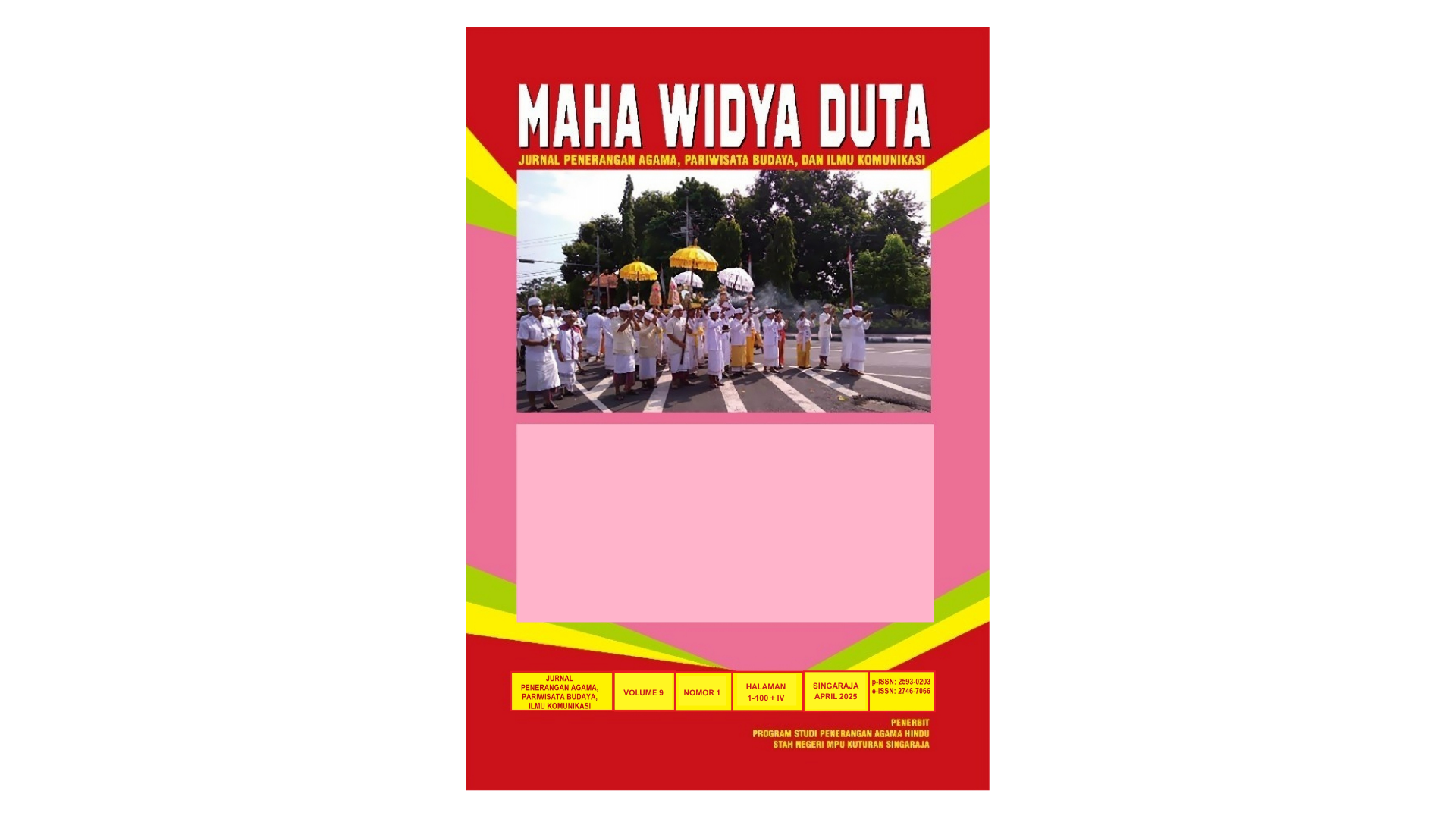KOMUNIKASI BUDAYA PADA TRADISI PERANG TOPAT DALAM MEMPERKUAT MODERASI BERAGAMA DI DESA LINGSAR KECAMATAN LINGSAR KABUPATEN LOMBOK BARAT
Keywords:
Cultural Communication, Perang Topat, Religious Moderation, Cultural Symbols, ToleranceAbstract
The Perang Topat tradition is a unique form of cultural communication practiced in Lingsar Village, West Lombok, which unites Balinese Hindus and Sasak Muslims in a shared ritual procession. This study aims to describe the forms of cultural communication within the tradition and analyze its implications for strengthening religious moderation. Using a qualitative ethnographic approach, data were collected through participant observation, in-depth interviews, and documentation. The findings reveal that cultural communication in the Perang Topat tradition manifests in verbal, nonverbal, and symbolic forms. Symbols such as ketupat (rice cake), buffalo, ceremonial umbrellas, and the sacred sites of Pura Gaduh and Kemaliq serve as mediums to express values of tolerance, harmony, and peaceful coexistence. The tradition functions not only as cultural preservation but also as a medium for internalizing religious moderation values, strengthening inclusive local identity, and fostering communal tolerance. Thus, Perang Topat stands as an effective model of cultural communication in promoting harmony within a multicultural society.
References
Agung, I. A. G. (1991). Gagasan dan dinamika budaya Bali dalam pembangunan. Yayasan Obor Indonesia.
Gudykunst, W. B. (2004). Bridging differences: Effective intergroup communication (4th ed.). Sage Publications.
Hall, E. T. (1976). Beyond culture. Anchor Books.
Hall, S. (1997). Representation: Cultural representations and signifying practices. Sage.
Hamid, A. (2021). Perang Topat sebagai simbol harmoni lintas agama di Lingsar. Jurnal Komunikasi Budaya, 5(2), 150–162.
Hofstede, G. (2001). Culture’s consequences: Comparing values, behaviors, institutions, and organizations across nations (2nd ed.). Sage Publications.
Kementerian Agama Republik Indonesia. (2021). Panduan moderasi beragama. Balitbang dan Diklat Kemenag RI.
Kim, Y. Y. (2005). Inquiry in intercultural and development communication. Journal of Communication, 55(3), 554–577.
Knapp, M. L., & Hall, J. A. (2010). Nonverbal communication in human interaction (7th ed.). Wadsworth.
Kusumawati, D. (2015). Efektivitas komunikasi verbal dalam pembangunan partisipatif. Jurnal Komunikasi Pembangunan, 13(1), 45–54.
Liliweri, A. (2003). Makna budaya dalam komunikasi antarbudaya. LKiS.
Lubis, N. A. F. (2020). Konstruksi nilai moderasi beragama dalam konteks lokal. Jurnal Moderasi, 1(1), 1–15.
Raharjo, D. (2006). Toleransi dalam keragaman budaya Indonesia. Jurnal Sosial Budaya, 8(2), 22–33.
Samovar, L. A., Porter, R. E., & McDaniel, E. R. (2013). Communication between cultures (8th ed.). Wadsworth.
Schutz, A. (1967). The phenomenology of the social world (G. Walsh & F. Lehnert, Trans.). Northwestern University Press.
Spiegelberg, H. (1982). The phenomenological movement: A historical introduction (3rd ed.). Martinus Nijhoff.
Sugiyono. (2018). Metode penelitian kuantitatif, kualitatif dan R&D. Alfabeta.
Thompson, J. B. (1990). Ideology and modern culture: Critical social theory in the era of mass communication. Polity Press

